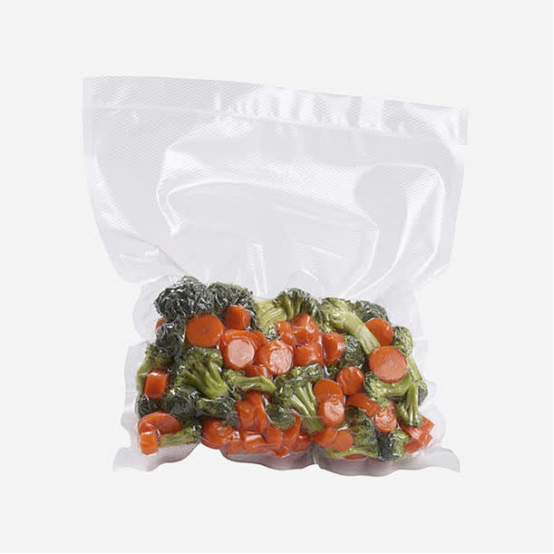How to Determine Whether the Sealing of Vacuum Packaging Bags is Good?
2025-08-04
It is crucial to preserve food, electronics or any other product in freshness and protection with a good vacuum packaging bag seal. A poor seal would allow air, water, or bacteria to enter and damage the contents. But how do you check for a good seal? It's easy! Just follow these steps.
Observe the Seal's Appearance
First, carefully inspect the seal area. A good seal is flat and even. Hold your finger against the seal. If it is not flat, wavy, or gaps, that's a red flag. These uneven areas mean the seal isn't properly bonded, allowing air to leak in.
Also, check the seal for wrinkles or creases. Even slight wrinkles can create a hole. For clear bags, hold the bags up to light. If light leaks through any part of the seal, that shows a weak spot. Dark or opaque bags may need to be examined more carefully by touch, running fingers over them to find any soft spots where the seal is not closed fully.
Test for Leaks
Air is the biggest enemy of vacuum packaging bags. To test for leaks, gently squeeze the bag. If it balloons up, air has entered, indicating a poor seal. For small bags, put them in a bowl of water and press gently. If bubbles escape from the seal, there's a leak.
Another way to measure this is to observe the bag. A well-sealed vacuum packaging bag should remain tight for several days. If it begins to loosen or bulge within a few hours, then the seal is compromised. This is particularly crucial for food; if the bag seems to be more relaxed in vacuum-tightness upon opening than it was when it was sealed, do not eat what is inside.

Check the Seal Strength
A good seal should be tough enough to resist ripping. Try to rip the ends of the seal. If it rips or can be pulled easily, the seal is poor. In heavy bags, such as meat or heavy items, the seal should remain intact even with slightly more force.
Also, pay attention to the width of the seal. Good vacuum seals are at least 5-8 mm in width. Narrow seals are more likely to break, especially if the bag is handled frequently. The seal width also needs to be consistent, without any weak spots that could break.
Check the Seal for Contaminants
Sometimes, particles, liquids, or food pieces can be trapped in the seal during the packaging process. This will prevent the seal from bonding. Check the rim of the vacuum packaging bag seal for crumbs, oil, or water. Even small particles can create gaps through which air will enter.
If you see any contamination, the seal is likely broken. You can wipe the area clean and reseal, but if debris is trapped inside the seal, the bag is unreliable. This is common with greasy foods or liquids, so make sure the seal area is clean before resealing.
Test with Weight or Pressure.
For bags designed to hold heavy objects, test the seal's ability to withstand the weight. Place the sealed bag on a flat surface and place a light weight on it. If the seal begins to crack or if the bag begins to bulge, the seal is too weak. For industrial bags, place a heavier weight to simulate real-world application.
You can also press the bag against a hard surface, such as a table, using your hand. A good seal won't break or allow air entry. If the bag is soft to the touch or begins to bulge when pressurized, the seal is broken.
Special Considerations for Different Materials
Bags made of different materials require slightly different inspection methods. The seal in a plastic-based vacuum packaging bag should feel firm and secure. Any stickiness or tacky feeling indicates insufficient cooling of the seal. Aluminum foil-lined bags should be inspected for complete bonding of the metal layer to the sealing area. A dull, mottled surface indicates poor bonding. Mesh or textured type bags, commonly used for porous items, require special attention to the textured surface for gaps. Gently run a toothpick along the seal to feel for any microscopic gaps.
Determining the seal of a vacuum packaging bag is simple, as long as you know what to look for. Inspect the seal first to see whether it is smooth and flat. Secondly, inspect for any leaks by using water or by squeezing it lightly. Inspect the seal strength by pulling the seal to see whether there is anything adhered that will compromise the seal. Finally, verify that the seal is tight by performing a weight or pressure test, with special considerations for different materials. Wancai is a vacuum packaging bag manufacturer. If you would like additional information about vacuum packaging bags, please contact us.






